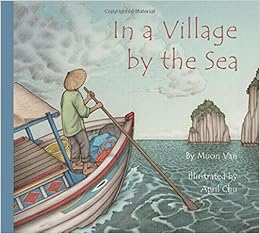
Opening lines: "Hmmm... This looks like a job for American Eagle!"
This picture book does a masterful job of flipping back and forth between the world of the imagination and objective reality the child is moving through. But it is way more exciting than that last sentence makes it sound. This is the story of a boy and a girl who are pretending to be superheros. As the American Eagle and Bug Lady they capture a panther that it escaped from the zoo (they put a plastic clothes hamper over the pet cat) and then try to stop the Rubber Bandit (a little brother with an over-sized sweatshirt) from robbing the First National Bank (located in the living room). However, when their roughhousing knocks over a bookcase and destroys a potted plant, American Eagle displays true bravery (and admits to his mom that it was his fault). It is a delightful story of imagination and the images are exciting and clear with comic book colors.
It would also be a useful resource for teaching kids how to read graphic novels, since the story is told with speech balloons and narration boxes. It might also serve as a model for young children who haven't learned how to do imaginative play. Could be used as a read aloud for kindergarten and for independent reading for first grade and up.
Van, Muon; Chu, April (2015) In a Village by the Sea. Creston Books

Opening lines: In a fishing village by the sea there is a small house. In that house, high above the waves, is a kitchen.
Sometimes it is hard to figure out why picture books are wonderful. Sometimes, a picture book will not have much of a plot to speak of. In a Village by the Sea, for example, the story is simple. A woman, a baby, a dog, and a cricket wait in a house in a village by the sea for a man to return from fishing. That is really all there is to the story. But what makes this story wonderful is that Muon Van's simple story is wonderfully depicted by April Chu. Chu's illustrations show the world of a Vietnamese village (and especially one particular house) as a world that the reader can explore. We climb the cliff from the beach, look in through the windows, the curtains blowing in the summer breeze, and see the layout of the house. Young readers can imagine walking with the dog into the kitchen, smelling the boiling noodle soup, checking on the slumbering baby, and looking through the hole in the floor to see what the cricket who lives under the house is painting. This is not about the story, it is about taking a beautiful trip to a village halfway around the world and being soothed by that which is familiar there.
Chu's book evokes a different kind of imagination than O'Connor's book did, but it is no less rich. This would be a fine book for kindergartners on up.
Burke, Rachelle (2014) Don't Turn the Page. Berkeley: Creston Books.

Opening lines; "How about a bedtime story," Mama asked.
Sami shook her head. "I don't want to go to bed. I'm not tired yet."
All right. I admit it. Not exactly a ground-breaking set of opening lines. And, when it comes right down to it, this book isn't exactly cutting edge. It is a story about a little hedgehog that doesn't want to go to bed, so her Mama reads to her and she gets sleepy and eventually goes to bed. The twist in this book is that the storybook they are reading is about a bear that doesn't want to go to bed. And so the Mama bear reads him a book, which is about a hedgehog that doesn't wantt to go to bed. In fact, both animals are reading the very book that the child is reading.
And honestly, it is a nice twist. But I think what makes the book is more the familiar parts than the metaphysical twisty parts. The story is exactly the sort of comforting, happy story that is best dead with the child on your lap, ready to go to bed. It might not be a perfect classroom read-aloud, and it might not be a book that first graders are going to grab off the shelf. But if you can get a child (or a parent) to bring this book home, you may have the chance to permanently associate reading in that child's mind with comfort, security, and love. And there is nothing wrong with that.
No comments:
Post a Comment